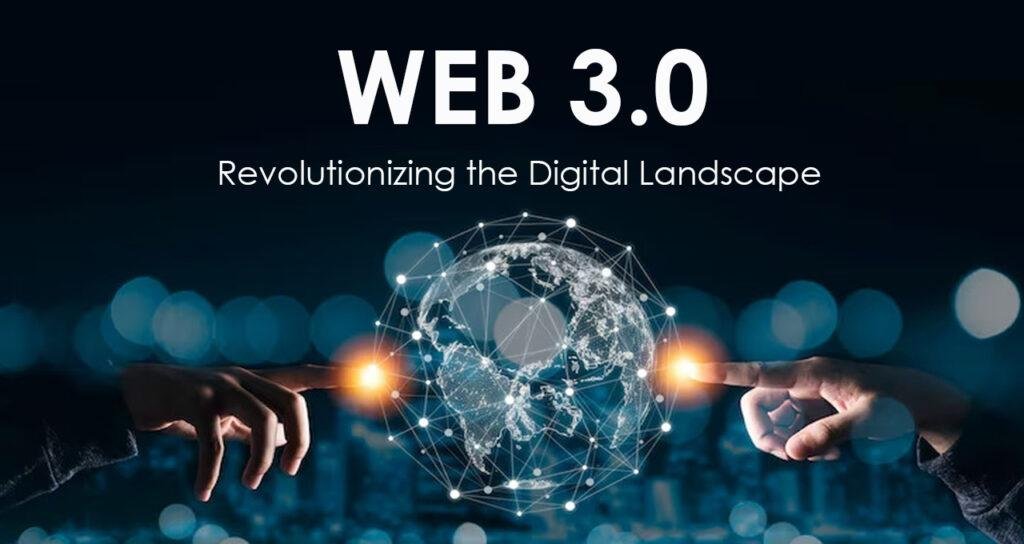In the ever-evolving world of technology, new concepts and innovations constantly emerge, shaping the way we interact with the digital realm. One such paradigm shift is the advent of Web 3.0, a transformative phase that promises to revolutionize the online experience. With its potential to redefine user interactions, enhance data security, and empower decentralized systems, Web 3.0 is poised to reshape the digital landscape. In this article, we will explore the key features, benefits, and implications of Web 3.0, underscoring its significance in our increasingly interconnected world.
Understanding Web 3.0
What is Web 3.0?
Web 3.0, often referred to as the semantic web, represents the next generation of Internet technology. It builds upon the foundations of Web 2.0, which introduced user-generated content and interactivity. However, Web 3.0 takes these concepts further by incorporating advanced technologies like artificial intelligence, blockchain, and the Internet of Things (IoT). This convergence enables a more intelligent, decentralized, and personalized web experience.
The Key Pillars of Web 3.0
- Artificial Intelligence (AI): AI plays a central role in Web 3.0, facilitating intelligent automation, natural language processing, and predictive analytics. By harnessing the power of AI, websites can provide personalized content, anticipate user needs, and deliver more engaging experiences.
- Blockchain Technology: Web 3.0 leverages blockchain, a decentralized and tamper-resistant ledger system. Blockchain enhances security, transparency, and trust in online transactions, enabling peer-to-peer interactions without intermediaries. This technology opens up possibilities for decentralized applications (dApps) and smart contracts, fostering a more democratic and secure digital ecosystem.
- Internet of Things (IoT): The IoT connects everyday objects to the internet, enabling them to send and receive data. In Web 3.0, IoT devices seamlessly integrate with the web, creating an interconnected network of devices. This integration allows for real-time data exchange, automation, and intelligent decision-making.
Advantages of Web 3.0
Web 3.0 introduces a multitude of benefits that enhance the user experience, enable innovative applications, and transform various industries. Let’s delve into some of the advantages it brings:
- Enhanced User Experience
Web 3.0 aims to deliver highly personalized and relevant content to users. Through AI algorithms and machine learning, websites can analyze user preferences, behavior patterns, and contextual information to curate tailored experiences. This level of personalization fosters increased user engagement, satisfaction, and loyalty.
- Improved Security and Privacy
With the integration of blockchain technology, Web 3.0 addresses the growing concerns around data security and privacy. The decentralized nature of blockchain ensures that data remains immutable and resistant to unauthorized modifications. Additionally, users have more control over their data, with the ability to manage permissions and grant access on a need-to-know basis.
- Decentralization and Empowerment
Web 3.0 promotes decentralization by removing the reliance on centralized authorities and intermediaries. Through smart contracts and decentralized applications (dApps), users can engage in peer-to-peer transactions without the need for intermediaries, reducing costs, increasing efficiency, and fostering economic empowerment.
- Innovative Applications
Web 3.0 unlocks new possibilities for innovative applications across various industries. Sectors such as finance, supply chain management, healthcare, and entertainment can benefit from the transparency, efficiency, and security offered by Web 3.0 technologies. For example, decentralized finance (DeFi) platforms leverage blockchain to enable trustless lending, borrowing, and trading.
- Collaborative and Interconnected Web
Web 3.0 fosters collaboration and connectivity by enabling seamless data exchange between devices and applications. The integration of IoT devices into the web fabric allows for real-time data sharing, creating opportunities for smart cities, connected homes, and efficient infrastructure management. This interconnectedness drives innovation and efficiency across different domains.
The Future of Web 3.0
As we venture further into the era of Web 3.0, its potential impact on society, technology, and business becomes increasingly apparent. From decentralized finance to autonomous vehicles, Web 3.0 technologies will continue to shape our world in remarkable ways. Embracing this paradigm shift opens doors to new business models, improved efficiency, and novel user experiences.
To fully realize the potential of Web 3.0, collaboration between stakeholders, industry experts, and policymakers is crucial. Standardization, scalability, and continued research and development efforts will drive the adoption and evolution of Web 3.0 technologies.
Conclusion
Web 3.0 represents an exciting and transformative phase in the evolution of the internet. By integrating artificial intelligence, blockchain, and the Internet of Things, Web 3.0 empowers users with personalized experiences, enhanced security, and decentralized systems.
As we look to the future, it is essential for businesses, developers, and users to embrace and adapt to the opportunities and challenges presented by Web 3.0. By harnessing its potential and leveraging its technologies, we can shape a digital landscape that is more inclusive, efficient, and user-centric. Web 3.0 paves the way for a future where the internet seamlessly integrates with our lives, enabling us to unlock new frontiers of innovation and connectivity.
Alobha Technologies is at the forefront of this revolution, providing services that help businesses and individuals take advantage of the new opportunities available in Web 3.0. With their advanced technology, they are able to offer solutions that can improve user experiences and make it easier for businesses to reach their target audiences. By leveraging Alobha Technologies’ services, businesses can ensure that they are leveraging the latest technologies available in order to stay ahead of their competition and remain relevant in today’s digital world.
